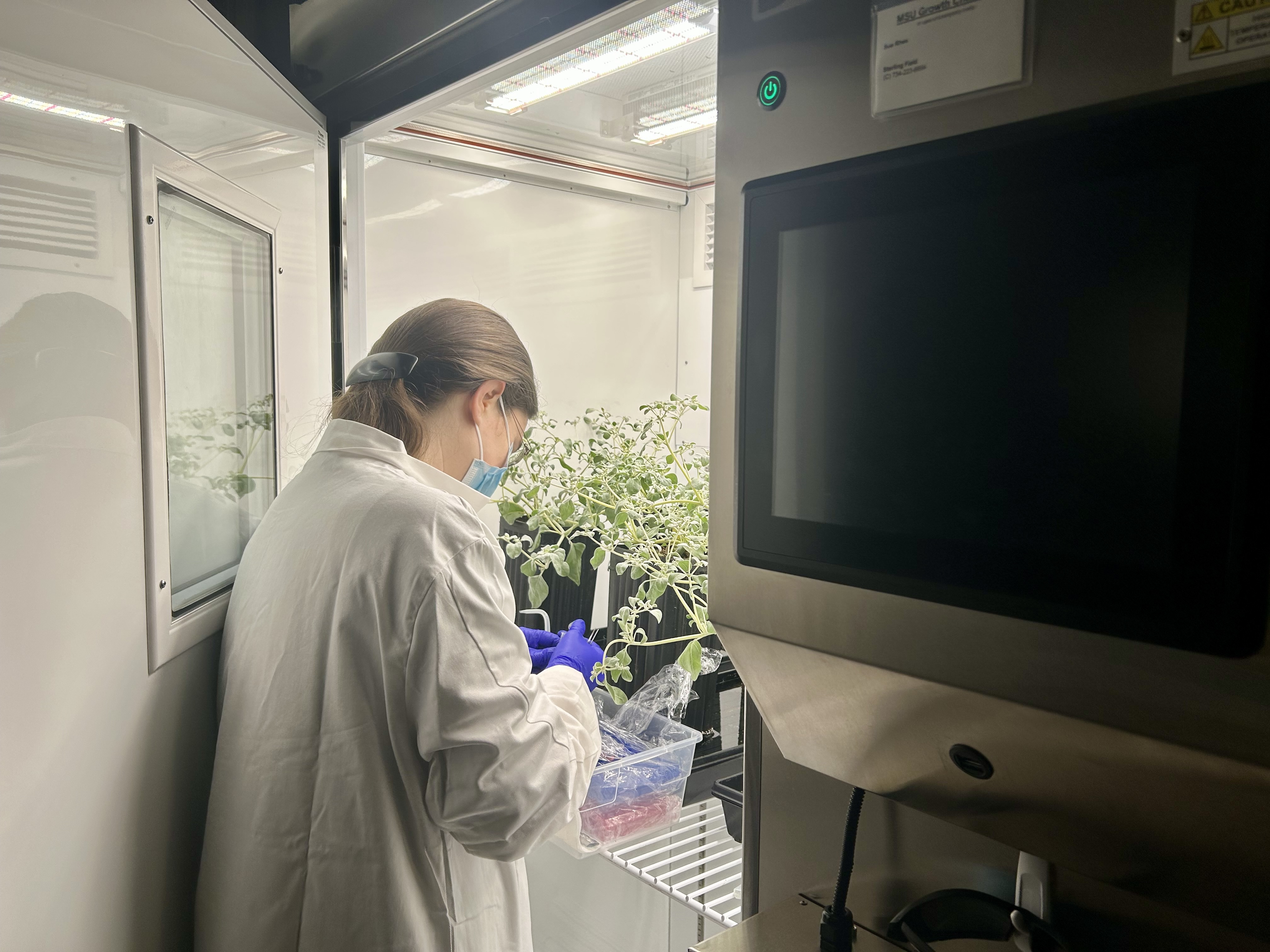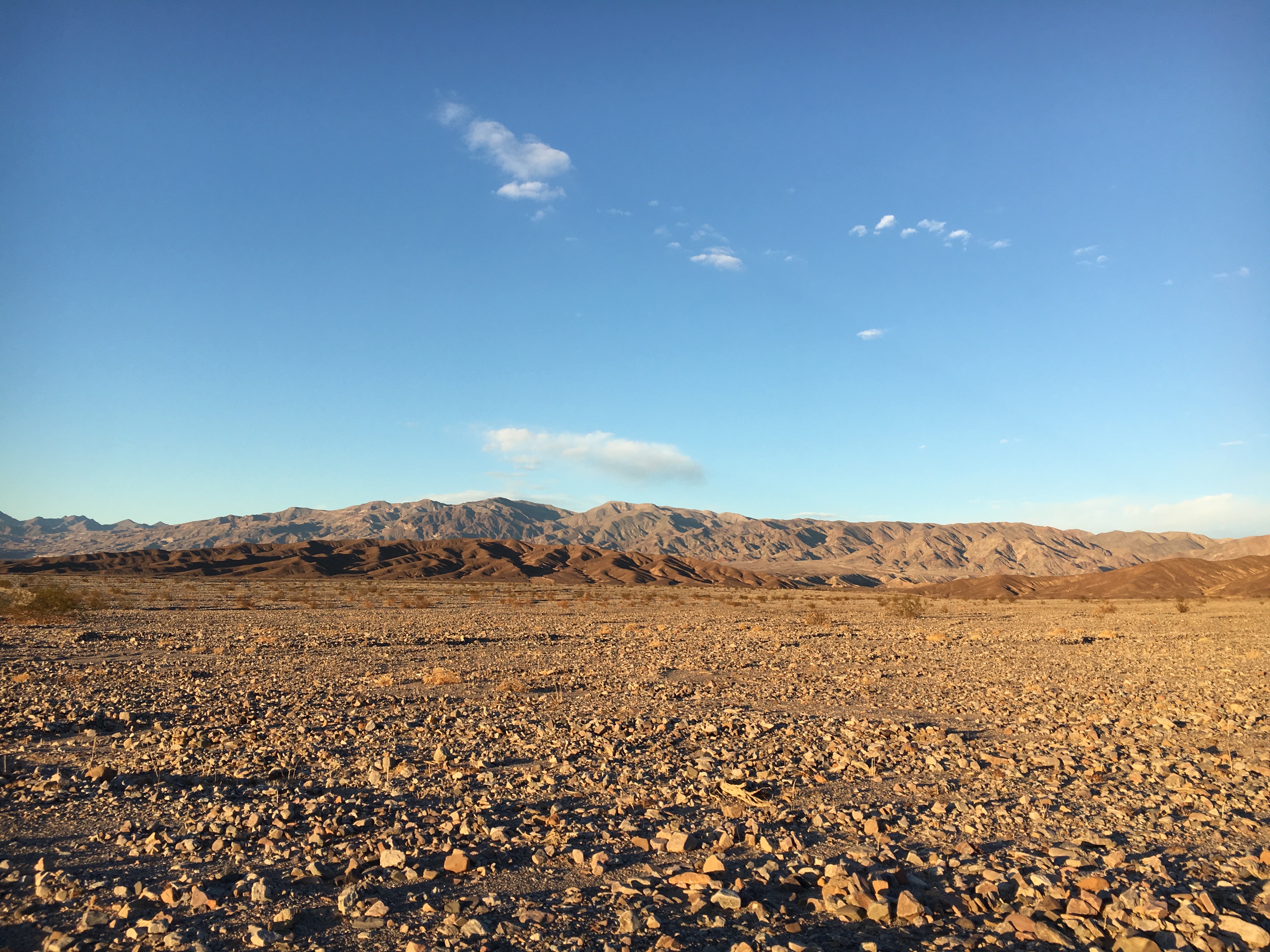Death Valley shrub rearranges its insides to thrive in one of the hottest places on Earth
Heat-loving plants that thrive in California's Death Valley could hold the key to growing crops in a changing climate.

Scientists have finally discovered how a weird desert plant can thrive in one of the hottest places on Earth. Turns out, the plucky plant rearranges its insides when the temperature goes up.
California's Death Valley frequently experiences extreme conditions.. Summer temperatures often soar above 120 degrees Fahrenheit (49 degrees Celsius) in the shade. Most plants wither in the face of such heat, but one plant, Tidestromia oblongifolia, thrives.
Now, researchers have found that these gray-green flowering shrubs grow smaller leaves and rearrange their insides to flourish in super-hot conditions. They also found that the shrub has the best photosynthetic heat tolerance — the ability to photosynthesize at high temperatures of any known plant.
The research was published Nov. 17 in the journal Current Biology.
Climate change is driving up global temperatures and increasing the frequency of heat waves. The heat is already reducing crop yields for staple foods like wheat and maize, and scientists and officials are worried about what this means for food security as temperatures continue to rise.
Heat-loving plants, such as T. oblongifolia, could hold the secrets to help other plants survive the heat and keep food on people's plates. "Understanding their adaptations could help researchers design crops, environments, and management strategies to improve growth under increasingly frequent and prolonged high temperatures," study co-author Seung Rhee, a plant biologist and director of the Michigan State University’s Plant Resilience Institute, told Live Science.

Scientists have known for decades that there is something special about T. oblongifolia. At higher temperatures, most other plants' rate of photosynthesis declines. But in 1972, researchers showed that T. oblongifolia's photosynthesis peaked at 117 F (47 °C).To find out how the hardy survivor can continue to photosynthesize and flourish while other plants wither, the researchers behind the new study collected seeds from Death Valley and grew the plants in growth containers. When the plants were eight weeks old, the scientists subjected them to Death Valley conditions for a month. They then observed the plants' responses, such as how much carbon dioxide they absorbed.
Get the world’s most fascinating discoveries delivered straight to your inbox.
Within two days, T. oblongifolia had intensified its rate of photosynthesis. After 10 days, it had tripled its biomass in a profusion of leaves that were smaller than the ones it produces at lower temperatures.
But the really surprising change happened within the plant. The scientists found that it developed more mitochondria, which are the powerhouses — or batteries — within the cell. These mitochondria were also more mobile and able to move closer to the sites of photosynthesis, which takes place inside special organelles called chloroplasts.
"This plant is moving the mitochondria around, reducing their volume, but increasing the density so that there are concentrated energy centres around the chloroplasts," Andy Leigh, a plant ecologist at the University of Technology Sydney in Australia who specializes in heat-loving plants and was not involved in the research, told Live Science.
In response to the brutal Death Valley temperatures, the plant's chloroplasts also changed from ovals into a cup-like shape — something that had been previously seen in algae but not in plants that have many chloroplasts in the same cell. The researchers are not sure how the cup shape promotes photosynthesis and survival.

T. oblongifolia also rewires its transcriptome, which is a script of all the RNA messages that the cell produces at a given time and indicates which genes are being used or expressed. Some of the active genes focused on heat response and the plant's repair system.
Rhee said the team's next step would be to identify and characterize candidate genes to further narrow down how the plant survives. These could then enable researchers to find new ways to help other plants survive rising temperatures.
"The mechanisms that lead to temperature sensitivity are well known, but strategies to overcome these inefficiencies are still being developed," Carl Bernacchi, a crop researcher at the University of Illinois Urbana-Champaign who was not involved in the research, told Live Science. The new insights provide "a roadmap for potentially overcoming these challenges," he said.
T. oblongifolia's strategies to survive and flourish at high temperatures could "help increase crop resilience not only for the future, but also for parts of the world that are presently food insecure," he added.
Leigh was excited by the new research. T. oblongifolia "could physically reconfigure its photosynthetic machinery when the chips were down, and to maintain photosynthetic function when it was stressful. That's really cool," she said.
Leigh, who studies heat-loving plants in Australia's scorching deserts, said there is a lot scientists still don't know about organisms that survive in extreme environments.
"This particular species looks like a weed — a really freaky thing that you could just overlook," she said. "There are really weird plants out there doing weird stuff that could be the key to improving our crops."

Sarah Wild is a British-South African freelance science journalist. She has written about particle physics, cosmology and everything in between. She studied physics, electronics and English literature at Rhodes University, South Africa, and later read for an MSc Medicine in bioethics.
Since she started perpetrating journalism for a living, she's written books, won awards, and run national science desks. Her work has appeared in Nature, Science, Scientific American, and The Observer, among others. In 2017 she won a gold AAAS Kavli for her reporting on forensics in South Africa.
You must confirm your public display name before commenting
Please logout and then login again, you will then be prompted to enter your display name.
